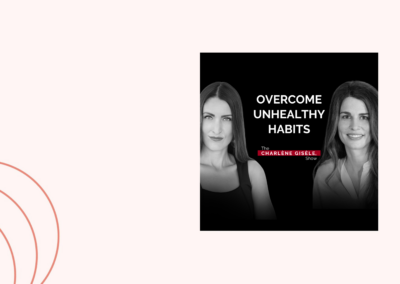At the onset of the Covid-19 pandemic, working from home started as a necessity for keeping safe. But as months pass and we near the end of the year, it’s clear working from home is not just a health precaution and is here to stay, as multinational companies such as Twitter are allowing employees the option to be based at home permanently.
While working from home has many advantages, the challenges are undeniable as the boundaries of work and play blur and merge into one physical space. Many find themselves juggling more responsibilities with families sharing the same space for a prolonged period of time.
Besides the family balancing act, interacting with colleagues through screens is just not the same. Surveys about remote working often quote loneliness as one of the main disadvantages of working from home. Bloomberg for example mentions that camaraderie and social interactions with colleagues both during and after work are what employees miss the most about the workplace. Lack of face-to-face interaction can have a negative effect on work performance and overall wellness, and people who thrive on being recognised for their work contributions may not feel valued in online meetings and emails.
It is also quite easy to fall into the trap of working longer hours, taking fewer breaks from the computer and checking emails and work messages before bed. Even the dreaded commute serves a purpose: it represents the clear delineation of going from your home to your workplace, giving you time to put on your work persona and get into the work head space and prepare yourself mentally for the day.
Here are some strategies to help you cope with the challenges of working from home.
Keeping Boundaries
Managing both space and time is important in maintaining personal boundaries, so you don’t get overwhelmed trying to juggle your home and work life in one physical space.
Have a dedicated space in your home or, if there isn’t enough space, try clearing all work documents from your desk or kitchen table at the end of your work shift. The act of cleaning up all your work materials signals that you’re “closing shop” and just like your commute back home, it creates a clear delineation between home and work hours.
Changing out of your home clothes to get into the zone also helps. Harvard Business Review advises to change into work clothes in the morning and, if possible, to go for a walk before starting work. Keeping a regular exercise routine is a great way to manage stress. OutwitTrade recommends to leave your most difficult work for when you know you work the best, set a clear and achievable daily target, among other tips.
Planning a schedule for the whole week is also helpful in allowing you to allocate regular breaks, times for online meetings and times for uninterrupted, concentrated work. The schedule must also take into account keeping evenings and weekends for rest and relaxation as this undivided time to rest is essential to preventing burnout. Remember just because you are in your own personal space, does not mean you no longer need any personal time.
Those with caring responsibilities can block out time to concentrate on family duties but they need to communicate and align this schedule with their employer (or with employees if you are a business owner). Managing expectations and being clear about when you are able to meet deadlines can help reduce stress.
It’s OK to Say No
Even when it feels uneasy, you are allowed to say no to requests if your workload becomes unmanageable or if you know your productivity will suffer. Being able to say no is a way to say yes to ourselves, to preserve our energy and be able to meet our commitments without feeling guilty or overwhelmed.
This principle stands for both work colleagues and family members. For example, you might be working in a shared area such as the kitchen or the living room and family members interrupt your work because they want to chat, or your children need to borrow your laptop for their homework. It’s best to explain your time boundaries clearly, setting exact times when you will take breaks or finish your workday. This is as much for them as it is for you because without clear work/family lines, neither your work nor family will be able to get your full attention.
You may also be receiving too many invitations to Zoom meetings while simultaneously juggling pressing deadlines. Having too many Zoom meetings can severely affect productivity whether it be because of time efficiency or being too drained after consecutive long calls. It might help to schedule blocks of time in your diary to rest after Zoom meetings and build in some alone time (including away from children if you have caring responsibilities) to do some quiet work that requires thinking and planning.
Being on camera is also an added source of stress: unlike face-to-face meetings, online video calls have a performance element which many people find draining. Not everybody feels comfortable in front of a camera and this can trigger feelings of anxiety so it’s a good idea to offer alternative ways to contribute to meetings including leaving voice notes.
Ask for Help
If the workload starts to become too heavy, it’s time to speak with colleagues and employers and ask to either share it or repurpose or postpone some of the tasks. Prioritising important tasks over non-essential ones and negotiating blocks of time without interruptions is the key to get things done without feeling overwhelmed. The pressure to feel always available can lead to burnout so communicating clearly is essential.
Forbes reported that 37% of 1,500 people interviewed in a mental health survey in the States admitted to working longer hours since the start of the pandemic and 40% experienced burnout during the pandemic.
Switching Off
One of the factors that can raise stress levels, diminish sleep quality and cause fatigue during the day is spending too much time staring at a screen, especially in the evening. Light from screens can disrupt hormone levels, particularly melatonin which is responsible for sleep. A healthy bedtime routine can include switching off devices an hour before sleep, reading a book, listening to podcasts and meditating. Some people go so far as to declare their bedrooms “gadget free zones”.
Picture in your mind what your ideal working day looks like. This looks different for everyone, but what is usually common amongst most is the desire to have a break in the day to rest, relax and refocus. It can be useful to spend even just 10-15 minutes every day to calm your mind and body, re-energise yourself, and address any tension that may be building up through simple relaxation exercises, like Sophrology.
Sophrology is a great way to reach a state of calm quickly and effectively using abdominal breathing in conjunction with tensing and releasing the muscles in the body. Sophrology is a mental wellbeing practice combining breathing, visualisation, meditation and gentle movement to allow mind and body to calm down.
Here is a simple exercise called ‘Tense/Release’ that you can do when you feel the tension mounting. You can choose to do it either standing up or sitting down. Close your eyes and focus on your breathing. Allow your tummy to expand as you breathe in and to go back to its initial position as you breathe out. Scan your body for any areas of tension, starting from your head, taking all the time you need.
As you identify the tension in your body, begin to release it by lifting your arms in front of your body clenching your fists as you breathe in. Clench all the muscles in your body and then lower your arms relaxing all the muscles as you breathe out. With your eyes still closed notice all the sensations in your body and repeat for as many times as you need. Before you open your eyes again, stretch and move your body gently to go back to your usual state of consciousness.
The more you practice the easier it gets to enter a state of deep relaxation that lets you feel both rested and energised.
Remember, one of the best ways to prevent burnout is to prioritise yourself and to regularly check and acknowledge the way you feel, processing emotions as they appear instead of bottling them up or ignoring them. Do you feel irritable? Take a few moments to breathe slowly and find out where this emotion is coming from and where it is manifesting in the body, perhaps as muscle tension around the temples or in the shoulders. Sophrology is a way of letting go of tension without judging your emotions, perceptions and sensations.
Looking after your mental and emotional health is a worthy investment and with simple and quick practices like Sophrology it’s easy to integrate this into your daily routine. Find out more about our Sophrology online course.



